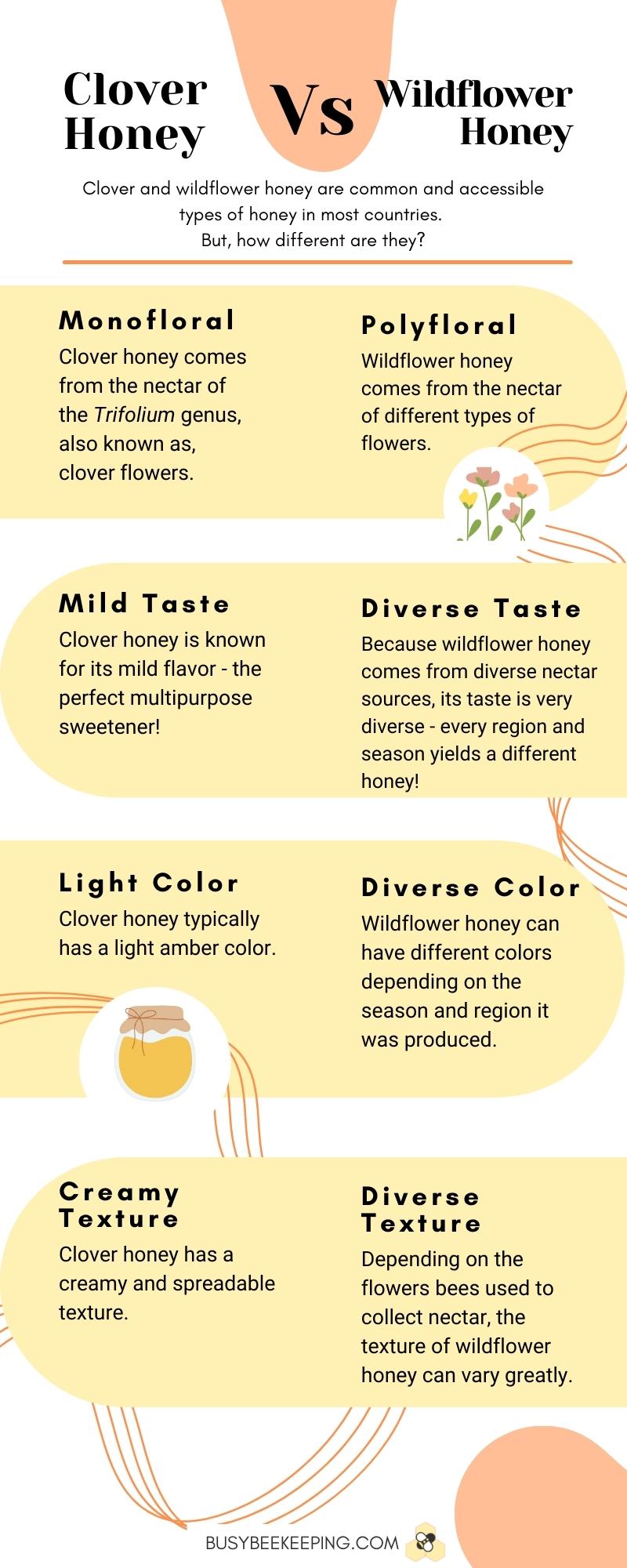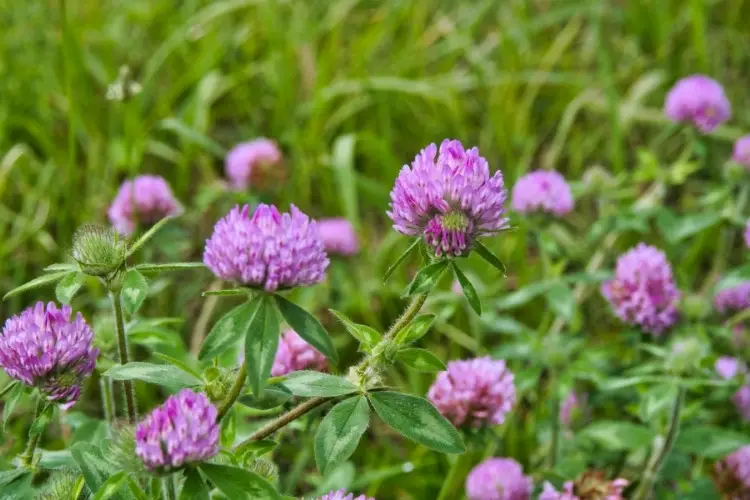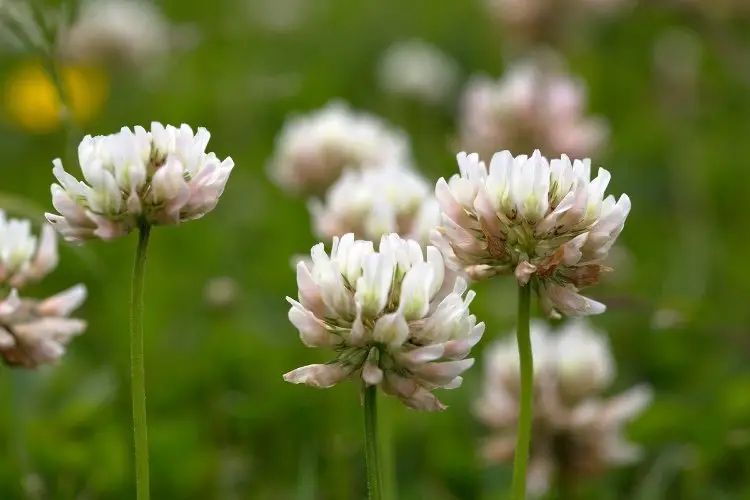There are several types of honey – each with its unique taste and aroma. A couple of honey types I’ve heard many times are clover and wildflower honey. They are both very popular and easily accessible in most countries.
So, what are they, and how are they different?
Clover honey is honey derived from clover flowers and is usually light in taste and color. In contrast, wildflower honey refers to honey from different floral sources close to the bees that make it. Because it largely depends on flowers available to bees, it will vary in flavor, texture, and color.
Let’s look at each type of honey and their main differences…

Clover Honey
Clover honey is monofloral. This means it results from the nectar collected from one type of flower. As you might have guessed by its name, this honey comes from flowers in the Trifolium genus, also known as clover flowers. There are approx. 300 species of clover flowers in the world, with red clover, Trifolium pratense, as the most grown in the world.

Clover is commonly grown as lawn due to its hardiness. It can grow in diverse types of soils and climates. Clovers, especially white clover, are also widely used for pasture as it provides high nutritional value to livestock.
With the help of bacteria, clovers are also known for enriching the soil around them by transforming nitrogen in the atmosphere into a usable form other plants can benefit from. As a result, agricultural programs like the one created by the United States Department of Agriculture (USDA) have provided incentives to plant these flowers to improve the soil quality in certain areas.
The best part? Honey bees love them!
Clover flowers contribute more to honey production in the United States than any other. Lawn weeds like clover and dandelion are among the most important food sources for bees in urban areas.
White clover, or Trifolium repens in particular, is an ideal source of food for bees as it’s tolerant to shade and blooms even when there’s little sunlight. In addition, the pollen of white clover is packed with protein, and its nectar is high in sugar, making it very nutritious to pollinators like honey bees.

Clover Honey Characteristics
So, what are the characteristics that make clover honey unique?
Sounds like a contradiction but what makes clover honey special is how ordinary its taste is. By this I mean clover honey doesn’t have an intense flavor, making it a dependable staple and crowd-pleaser sweetener.
Clover honey is excellent in cooking and baking as it adds a sweet touch to food without an aftertaste that alters the flavor significantly.
Although it depends mainly on the type of clover, this honey generally has a light amber color.
Clover honey tends to be considered on the creamy spectrum and is easily spreadable. Because it has higher glucose to fructose ratio, it crystallizes faster than other types of honey, making it a popular base for creamed honey.
Wildflower Honey
Unlike clover honey, wildflower honey is polyfloral. This means it comes from the nectar of different types of flowers. The most exciting thing about wildflower honey is that it’s incredibly diverse. It varies according to the region and season it’s produced.
Bees forage nectar and pollen in their vicinity; therefore, the honey they make will have the characteristics these flowers provide. At the same time, the types of flowers available to bees will be very different from one location to another, as well as the season during which they collect the nectar.

For example, a jar of wildflower honey from Canada will have a distinct taste to one from New Zealand. Similarly, a jar of honey this year will most likely be different from a jar harvested a couple of years ago.
Wildflower honey is a common type of honey because we usually plant more than one species of flowers next to each other. Except for commercial flower growers who plant a big field of one species, most gardens have a wide variety of flowers. This makes it easy for honey bees to collect nectar from a diverse range of sources to produce honey.
Wildflower Honey Characteristics
Because wildflower honey depends mainly on what flowers the bees visited during a determined period, it’s hard to determine what its flavor is like. It can taste wildly different from one region to another and even according to the season.
Conclusion
Clover and wildflower honey are both common types of honey but have significant differences.
Clover honey is monofloral. This means it comes mostly from one type of flower, in this case, the clover flower. In contrast, wildflower honey is the name given to honey that results from nectar foraged from different types of flowers. In other words, it’s polyfloral.
Clover honey is widely known for its light taste and color. Its low flavor intensity makes it a great all-around staple in the pantry as it adds sweetness without leaving a distinct aftertaste.
Wildflower honey is highly diverse. It depends on the floral sources available to bees at a determined time. This means its characteristics, such as flavor, color, and texture, depend on the region and season.
Both are popular and easily accessible for different reasons. On the one hand, clover honey is common because these flowers are widely available to bees and are highly nutritious. Clover flowers are extensively used as lawns due to their hardiness and ability to enrich the soil they grow in.
On the other hand, wildflower honey is common due to people’s preference to plant mixed flowers in the same area, such as gardens and backyards. This makes a great variety of nectar available for bees to forage and make honey.
